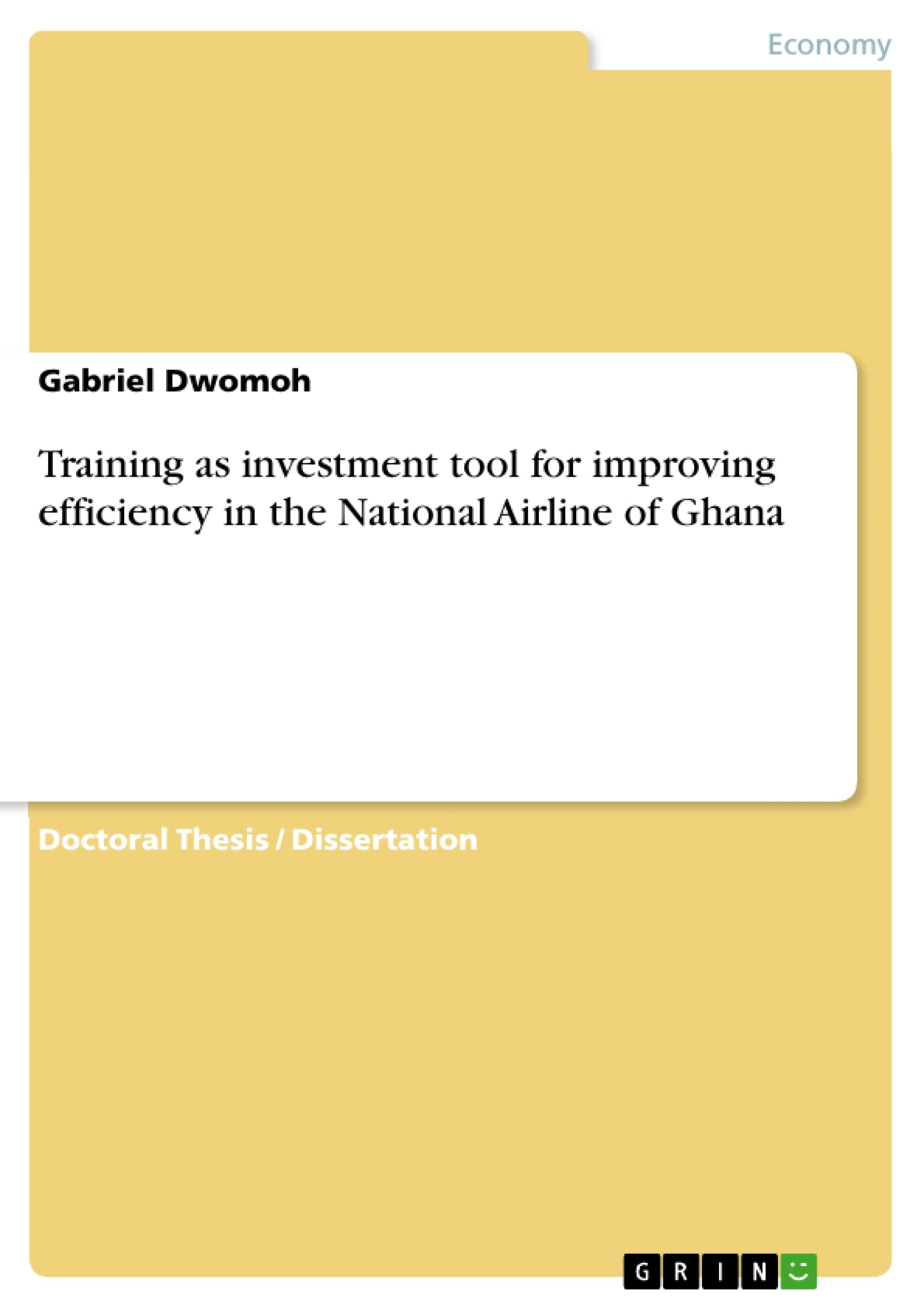The research study set out to identify how Ghana International Airlines which is termed as the national airline use training as investment tool to improve efficiency in terms of maximizing shareholders wealth. There have been many attacks with regard to the services provided by the national airline. Some customers of the airline even claim that the employees who provide services to them have not got the required skills and knowledge and as such the services they receive from them are below expectations. On the other hand, if the national airline also claims that they invest so much money in their employees so as to ensure that better services are provided which at the end of the day will lead to more customers referring their friends and relatives, then there may be so many questions which one may need to ask. Among some of these questions are, do they invest in the right employees, do they design and develop their training programmes to meet the needs of the employees as well as the organization? Lastly one may also ask if they evaluate their training programme at the end of the day so as to know the cost and benefit associated with it.
The study was mainly to provide answers to these questions by using questionnaires and interviews so as to get responses from employees of the airline, heads of department as well as trainers and the human resource manager of the company. The study realized that the most common means of assessing whether an employee needs to go on training or not was the self request method where the employee choose from the list of training programmes of the airline which he is interested in. It was also realized that though Heads of Department of the airline play important role in the design and development of training programmes but when it comes to evaluation, there is no proper way to determine the cost and benefit associated with the training embarked by the airline. The study also came out with a way by which cost and benefit of a particular training programme can be determined using the Net Present Value technique. This was based on the opinion of the researcher on how training benefit of an organization can be determined.
The main limitation of the study was based on the responses given by the employees, heads of department, the trainers and the human resource manager since all the analysis of the study were based on their responses. [...]
Inhaltsverzeichnis (Table of Contents)
- Executive Summary
- CHAPTER ONE: INTRODUCTION
- 1.0 Background of the study
- 1.1 Statement of the problem
- 1.2 Objectives of the study
- 1.3 Significance of the study
- 1.4 Justification for the study
- 1.5 Research questions
- 1.6 Scope of the study
- 1.7 Limitations of the study
- 1.8 Organization of work
- CHAPTER TWO: LITERATURE REVIEW
- Introduction
- 2.0 Training and investment – what are they?
- 2.1 Reasons for training investment
- 2.2 Framework for training investment process
- 2.3.1 Training needs assessment
- 2.3.2 Training design and development
- 2.3.2.1 Defining training objectives and Developing training content
- 2.3.2.2 Selecting trainers
- 2.3.2.3 Scheduling the training programme
- 2.3.3 Implementing the training programme
- 2.3.4 Training evaluation
- 2.4 Training investment at the Ghana National Airline
- 2.4.1 The national airline training centre
- 2.4.2 Objectives of the training centre
- 2.4.3 Facilitators of the training centre
- 2.4.4 Admissions and entre requirements of the centre
- 2.4.5 The national airline training policy
- 2.4.6 Courses available at the national airline
Zielsetzung und Themenschwerpunkte (Objectives and Key Themes)
This thesis investigates the role of training as an investment tool for improving efficiency within the National Airline of Ghana. The primary objective is to analyze how effective training programs can enhance the airline's operational performance and contribute to its overall success.- Examining the connection between training and investment
- Exploring the benefits and challenges of training investment in the airline industry
- Analyzing the training needs of the National Airline of Ghana
- Developing a framework for effective training program design and implementation
- Evaluating the impact of training on the airline's efficiency and profitability
Zusammenfassung der Kapitel (Chapter Summaries)
Chapter One introduces the research topic, providing background information on the National Airline of Ghana and highlighting the significance of training as an investment tool. It delves into the problem statement, outlining the challenges faced by the airline in terms of efficiency and performance. Furthermore, the chapter establishes the study's objectives, research questions, scope, limitations, and organization.
Chapter Two delves into a comprehensive literature review, exploring the concepts of training and investment. It examines the rationale behind training investment and presents a framework for the training investment process, encompassing needs assessment, design and development, implementation, and evaluation. The chapter then focuses specifically on training investment at the Ghana National Airline, providing insights into the airline's training center, objectives, facilitators, admission requirements, policies, and available courses.
Schlüsselwörter (Keywords)
This thesis focuses on the vital role of training as an investment tool in enhancing the efficiency and profitability of the National Airline of Ghana. Key terms and concepts explored include training needs assessment, training design and development, training implementation, training evaluation, investment analysis, operational efficiency, and human capital development within the airline industry.- Citation du texte
- Gabriel Dwomoh (Auteur), 2011, Training as investment tool for improving efficiency in the National Airline of Ghana, Munich, GRIN Verlag, https://www.grin.com/document/191468




